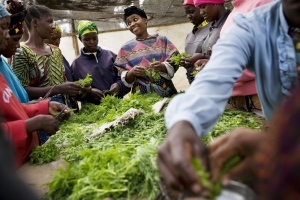The cost of the life-saving antimalarial drug artemisinin could be lowered by a third, with a new method that utilises a waste product from the current plant extraction process, according to researchers.Artemisinin is sourced from the cultivated plant Artemisia annua (sweet wormwood), but demand is outstripping supply because artemisinin combination therapies (ACTs) are now recommended as a front-line treatment for malaria by the WHO.

The plant Artemisia annua is used to make Artemisinin, currently the most efficient drug combating malaria.
WILLIAM DANIELS / PANOS
The artemisinin extraction process produces around ten times as much artemisinic acid as it does artemisinin itself.But converting the artemisinic acid precursor into the chemically more complex artemisinin molecule has proved a "formidable challenge" for chemists, researchers noted.Now, they have found a quick and easy way of converting this acid into artemisinin.They used continuous flow chemistry which involves passing chemicals down a tube to increase reaction times, efficiency and safety.


No comments:
Post a Comment